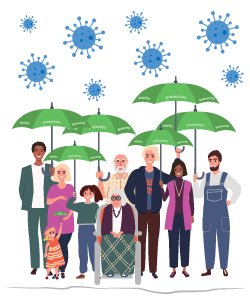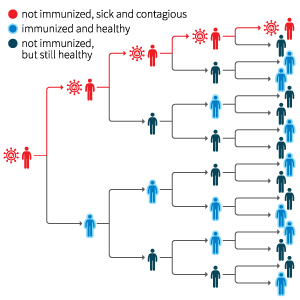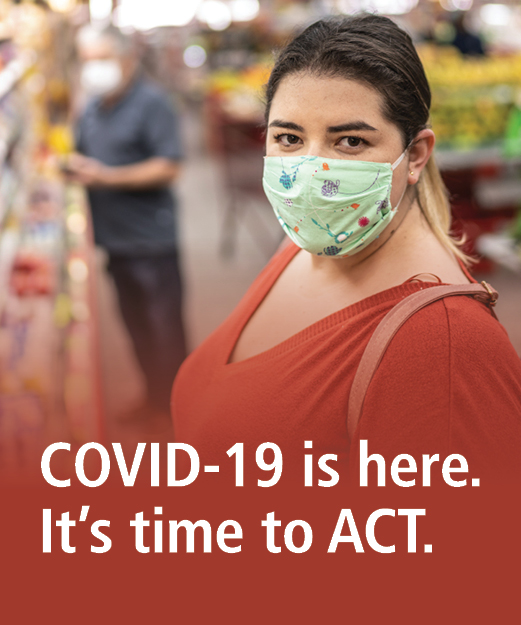What is Herd Immunity?

The Basics of Herd Immunity and its Implications for COVID-19
The concept of herd immunity came about in the early 20th century and has long been used as a strategy to fight certain diseases. Recently, the term has gained a lot of momentum once again, particularly as a way to treat the COVID-19 pandemic. What exactly is herd immunity, does it really work, and will it help end the COVID-19 pandemic? Keep reading to learn more.
How Herd Immunity Works

Herd immunity refers to a large percentage of a community establishing immunity to a specific disease. Because of this largely immune population, the pathogen has less opportunity to spread, even to those who have never had exposure to the virus. In short, when a certain percentage of the population is immune to the disease, the spread decreases significantly, making spread more unlikely.
So what percentage of the population needs to be immune for herd immunity to happen? This is always dependent on the disease itself. Generally, the more contagious the disease, the larger the percentage of the population must be immune. COVID-19, for example, would require a high percentage of people to be immune due to its high contagiousness.
There are two ways to build herd immunity: through vaccines and through infection.
Herd Immunity through Infection
Generally, as our bodies recover from a specific disease, they naturally build antibodies to help ward off future infection from the same disease. You might think of this as the body’s own natural vaccine of sorts. For example, if you had measles as a child, it’s highly unlikely that you’ll develop the measles a second time because your body has long-lasting antibodies that would provide immunity if you were re-exposed.
You may have heard that some countries, such as Sweden, adopted much more lax COVID-19 policies, with herd immunity (through infection) as a goal. Recently, however, Sweden’s chief epidemiologist recognized the country’s high rates of COVID-19 cases, hospitalizations, and death. So what happened?
The problem is, we cannot confirm at this stage whether initial exposure to COVID-19 creates future resistance. Additionally, the mortality rate from COVID-19 is quite high, making the cost of developing herd immunity a risky prospect. Getting the disease, especially a novel, or new, virus that no one has immunity to means there is going to be a large number of people who get very sick. In some cases, this could lead to hospitalization or even death.
Unfortunately, current research is showing that reinfection is possible following a certain period of months or years. In fact, a small portion of the population has become sick with COVID-19 a second time. For this reason and others, further research is needed to assess the strength of the antibodies in those who’ve already been infected.
Herd Immunity through Vaccines

Vaccines are the most ideal form of herd immunity because they create resistance across a community more quickly and without people having to get sick in the first place. Vaccines also provide immunity without exposing vulnerable populations to a potentially life-threatening illness.
Vaccines work by stimulating the body’s natural immune response but in a much safer way. Instead of risking exposure to a live virus that can strike at any time and cause serious complications or hospitalization, the “exposure” provided by vaccines is safe, minimal, and controlled. Essentially, vaccines give you a small dose of an inert form (or piece) of the virus, which alerts your body to create the same immune response it would with the live virus – sans the symptoms of the disease.
Once a certain percentage of the population is vaccinated, it creates herd immunity for everyone, including babies or those who can’t vaccinate for various reasons. However, this population-built immunity drops if the community falls below a certain percentage or threshold. For this very reason, we work alongside our local health departments to promote routine childhood vaccinations as well as the seasonal flu shot for everyone. It takes a certain number of people to get their vaccinations to keep the whole community safe.
Herd Immunity and COVID-19

While herd immunity through exposure would put many people at risk unnecessarily, FDA-approved COVID-19 vaccines mean that over time, herd immunity is achievable once enough people receive the vaccination.
In the meantime, it’s essential to Avoid COVID-19 Today (ACT) – even if you’ve recently received the vaccine – to prevent further spread of the COVID-19 virus.
Here’s how you can ACT
- Schedule your COVID-19 vaccine as soon as you’re able
- Practice physical distancing (6-ft or more) as much as possible and avoid large crowds
- Wash your hands frequently or use hand sanitizer with 60% or more alcohol
- Wear a mask when you leave home to work or run errands
- Follow your doctor’s trusted advice and get recommended appointments, screenings, and treatments to ensure you’re at your healthiest
Building Community "Herd" Immunity
Learn more about how vaccination helps build community immunity and how you can continue to help reduce the spread of the illness.